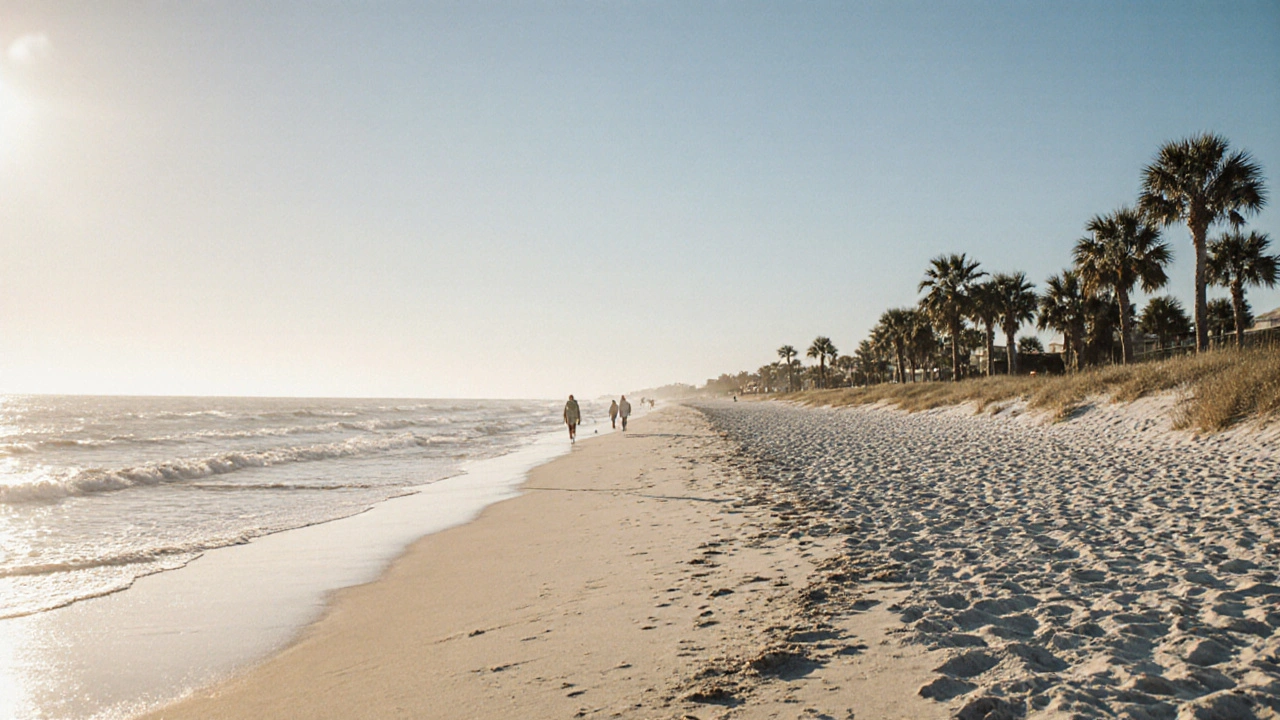Florida Weather: What to Expect, When to Go, and How It Affects Your Trip
When you think of Florida weather, the year-round warm climate that defines travel to the Sunshine State. Also known as Florida climate, it’s what makes beach days possible in January and theme park visits feel like steam baths in July. This isn’t just about sunshine — it’s about humidity that sticks to your skin, afternoon thunderstorms that roll in like clockwork, and winters so mild you’ll forget you need a jacket.
The Florida seasons, a simple split between wet and dry, not spring, summer, fall, and winter matter more than you think. From late May to October, you’re in wet season: temperatures hit 90°F, humidity hits 80%, and rain comes fast — usually between 2 and 5 p.m. It doesn’t last all day, but it’s predictable. That’s why so many families head to Disney in the morning, then retreat to their hotel pool until the storm passes. The dry season, from November to April, is when most visitors come. Days are warm but not sweltering, nights are cool, and the skies stay clear. This is prime time for beach trips to Cocoa Beach or day trips to the Everglades — no rain delays, no sticky clothes.
Florida humidity, the invisible force that makes even a 75°F day feel like 85°F isn’t just annoying — it affects how you plan your day. If you’re staying in Kissimmee, you’ll notice your hotel AC running nonstop. You’ll sweat through your shirt walking from the parking lot to the hotel lobby. That’s normal. Pack moisture-wicking clothes, bring a portable fan, and drink water like it’s your job. The same humidity that makes summer feel unbearable also keeps the landscape lush and green. It’s why you’ll see alligators in roadside ditches and palm trees bending in the wind — this climate supports life, even if it feels like a sauna.
And don’t forget Florida temperature, the range that lets you wear shorts in December and still need sunscreen in February. In January, Kissimmee averages 65°F during the day — perfect for walking through Disney without melting. In July, it’s 92°F with a heat index that can push 105°F. That’s why smart travelers avoid midday park hopping. They ride rides early, eat lunch indoors, and come back after 4 p.m. when the sun drops. The weather doesn’t stop your trip — it just changes how you do it.
Understanding Florida weather isn’t about checking the forecast. It’s about knowing the rhythm. Rain won’t ruin your day — it’ll just shift it. Heat won’t stop you from enjoying Disney — it just means you need a plan. And those cool winter nights? They’re your secret weapon for saving money. Hotels drop prices when the crowds thin out, and the parks are quieter. You don’t need to wait for perfect weather. You just need to know what to expect — and how to move with it.
Below, you’ll find real advice from travelers who’ve dealt with Florida’s weather firsthand — from how to beat the heat at Disney to which beaches are worth the drive after a storm. No fluff. Just what works.
What Is the Best Month to Visit Florida? Weather, Crowds, and Deals Explained

- October 13 2025
- 1 Comments
- Lucas Harrington
Find out the best month to visit Florida based on weather, crowds, and prices. From February's perfect conditions to September's unbeatable deals, get the real scoop on when to go.
- Kissimmee Florida (16)
- Florida travel (14)
- Disney World Vacations (13)
- Information & Privacy (4)
- Blockchain & Cryptocurrency (3)
- Travel (2)
- Travel Tips (2)
- Disney Parks & Tips (2)
- Disney History (2)
- Travel Advice (1)
Categories
- November 2025 (16)
- October 2025 (16)
- September 2025 (6)
- August 2025 (3)
- July 2025 (3)
- June 2025 (2)
- May 2025 (2)
- April 2025 (1)
- March 2025 (6)
- February 2025 (11)
- January 2025 (1)
Archives
- Florida beaches
- Florida
- Disney World
- Florida travel
- Disney World tips
- Disney vacations
- theme park tips
- Kissimmee
- tourism
- Kissimmee Florida
- Disney secrets
- Disney history
- travel
- Disney World crowd calendar
- Disney World cost
- Disney World budget
- Kissimmee cost of living
- Kissimmee vs Orlando cost
- Florida travel tips
- Kissimmee demographics
